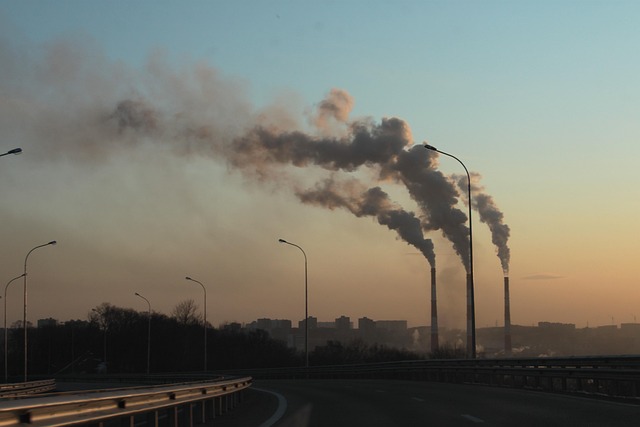Satellite & Remote Sensing Tools: AI & Machine Learning in Climate Tracking: Climate Finance & Investment Tracking: Challenges & Future Outlook Challenges in NDC Implementation Future Innovations in NDC Tracking Conclusion NDCs are essential for global climate action, but data-driven monitoring is key to ensuring transparency and accountability. By leveraging satellite observations, AI models, and open-access data platforms, we can track commitments more effectively and push for stronger climate policies worldwide.
Deforestation and Carbon Sequestration: Tracking the Data Behind Forest Loss
Global Forest IntroductionForests act as the planet’s carbon sink, absorbing one-third of global CO₂ emissions. However, deforestation is accelerating, particularly in the Amazon, Congo Basin, and Southeast Asia. Using satellite data and remote sensing, scientists and policymakers track deforestation rates and measure carbon sequestration potential. This article explores the data behind global forest loss and its impact on climate change. Deforestation Trends: The Data Perspective Global Forest Loss: Main Drivers of Deforestation: Impact on Climate Change: How Data Tracks Forest Loss & Carbon Sequestration Satellite Monitoring: Carbon Sequestration Models: Policy & Climate Commitments: Conclusion Deforestation threatens our ability to mitigate climate change, but real-time data and analytics offer powerful solutions. By leveraging satellite tracking, AI models, and carbon sequestration data, we can drive stronger policies and restore global forests.
Understanding the Urban Heat Island Effect
📊 Temperature Differences: 🌆 Key Contributors: 🔥 Health & Environmental Impacts: Data Sources for Urban Heat Mapping📡 Satellite Imagery & Remote Sensing: 🏙 On-the-Ground Temperature Sensors: 📊 Machine Learning & AI for Heat Prediction: Data-Driven Solutions for Cooler Cities✅ Cool Roofs & Pavements: Reflective materials lower heat absorption.✅ Urban Forests & Green Roofs: Increase vegetation cover to reduce heat.✅ Smart City Planning: AI-driven models optimize tree planting locations and building orientation.✅ Heat Action Plans: Data helps cities predict heat waves and prepare cooling strategies. ConclusionUrban heat islands are a growing climate challenge, but data-driven solutions can help cities adapt. By leveraging satellite data, AI predictions, and smart infrastructure planning, urban areas can reduce temperatures, improve air quality, and enhance public health.
Greenhouse Gas Emissions: Mapping the World’s Biggest Polluters
Greenhouse gas (GHG) emissions are the primary drivers of climate change, with global emissions continuing to rise despite international climate commitments. Tracking these emissions with data analytics helps identify major sources, trends, and solutions for mitigation. This article explores key emission trends, data sources, and how satellite monitoring enhances transparency. Global GHG Emission Trends📊 Rising CO₂ Levels: 💨 Sectoral Breakdown: 🌍 Regional Disparities: Data Sources for Emissions Tracking📡 Satellite-Based Monitoring: 📊 Official Reports & Models: 📉 Corporate Carbon Footprint Tools: Key Insights from Recent Data📌 Methane emissions underestimated – New satellite data shows oil & gas methane leaks are 60% higher than official reports.📌 Coal power is still dominant – Despite renewables, coal accounts for 36% of global electricity generation.📌 Carbon sinks are weakening – Forest degradation in Amazon & Congo Basin reduces CO₂ absorption capacity. ConclusionGHG emissions tracking is more advanced than ever, with satellite monitoring, AI models, and national inventories providing critical insights. Real-time data enhances climate accountability, pushing governments and corporations toward stronger emissions reductions.
Understanding LA Wildfire Trends
📊 Rising Frequency & Intensity: 🌡 Climate Change Factors: Current Emergency Incidents Ongoing emergency responses in California, including all 10+ acre wildfires Data Sources for Wildfire Analysis📡 Satellite Monitoring: 🔥 Fire Incident Reports: 📉 AI & Predictive Models: Key Insights from Recent LA Wildfires📌 Earlier Fire Seasons – The fire season now starts two months earlier than in the 1980s.📌 Wildfire Spread is Accelerating – Fires in LA burn twice as fast due to prolonged drought and dry fuels.📌 Economic Costs are Rising – Wildfire damages in California have exceeded $10 billion annually. ConclusionThe LA wildfire crisis is a climate data problem—one that requires predictive analytics, real-time monitoring, and policy-driven solutions. By leveraging satellite data, AI models, and historical fire patterns, we can better anticipate and respond to wildfires, reducing loss of life and environmental damage.
Tracking Nationally Determined Contributions (NDCs): A Data-Driven Approach
IntroductionNationally Determined Contributions (NDCs) are at the heart of the Paris Agreement, representing each country’s commitment to reducing greenhouse gas (GHG) emissions and adapting to climate change. But how effective are these pledges? Data analysis plays a crucial role in tracking progress, identifying gaps, and ensuring transparency in climate action. Analyzing NDCs: Key MetricsTo assess the effectiveness of NDCs, climate data analysts focus on:✅ Emission Reduction Targets – Percentage reduction relative to a base year (e.g., 1990 or 2005)✅ Sectoral Commitments – Energy, transport, agriculture, industry, etc.✅ Mitigation vs. Adaptation Measures – Policies aimed at reducing emissions vs. preparing for climate impacts✅ Conditional vs. Unconditional Pledges – Plans dependent on international funding vs. self-funded efforts 🔹 Example: Nigeria’s NDC aims to cut emissions by 47% by 2030, with a 20% unconditional target and the rest dependent on international support. Data Tools for NDC Tracking🌍 Climate Watch (WRI) – Provides a global database of NDCs📊 UNFCCC NDC Registry – Official repository of country submissions📡 Satellite Monitoring (NASA, ESA) – Tracks real-time emissions changes🔎 AI & Big Data Analytics – Helps detect inconsistencies between reported and actual emissions Key Insights from Recent NDC Updates📌 More Ambition Needed – While over 150 countries updated their NDCs in 2021, the current pledges still put the world on track for a 2.5°C+ warming scenario.📌 Implementation Gaps – Many developing nations struggle with implementation due to limited data infrastructure and funding challenges.📌 Transparency Issues – Some countries over-report progress due to outdated emissions inventories. ConclusionTracking NDC commitments is essential for ensuring global climate accountability. By leveraging climate data analytics, satellite monitoring, and AI, we can provide a clearer picture of how well nations are meeting their climate goals. Transparent data will drive stronger policies and better climate action.







